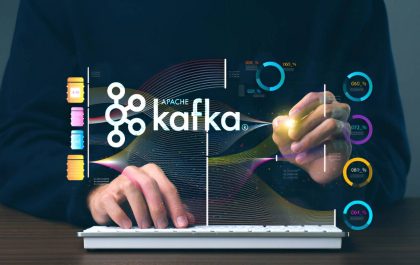Employee identification is a seemingly mundane aspect of business management. However, it has various essential functions both for the business and those working for it. In the olden times, it was far more straightforward for a business owner to know and be on familial terms with his employees. In the modern world, with everyone being a part of a global village, it is far more difficult for management to be on good terms with their employees.
As time went on, businesses started getting bigger and bigger, and they became more and more faceless. It meant that it became more and more difficult for employees to relate to the business and lost any sense of loyalty to the company.
Unique methods of employee identification are an excellent way to foster a sense of belonging in a company. It can be done in various ways and read on to get to know some of them.
In this article, you will learn about the different methods of employee identification. And how it goes beyond just bio metrics and simple name badges as well.
Also Read: Role Of Employee Motivation In A Business Organization
Table of Contents
ToggleEmployee Name Tags
It is difficult to beat the classics. Name badges have used in companies since the early days of modern businesses. Militaries around the world use name tags as a quick method of identification of soldiers. There is a reason for that. Name tags are cheap to produce and easy to use. Much like punch cards, they also have a retro appeal. Functional as well as fashionable, name tags might be the way to go.
Video Identification
Bio-metric video identification is a modern way of employee identification. It does not require any extra labor and is an excellent way to make employee identification quick and easy. It is a highly safe method of employee identification that is fast and easy but also helps make the workplace secure as it can use to keep out unrelated individuals to enter the work-space. Because there is no hassle upon entry, this helps to streamline the process of entry and exit from the workplace. Even better, video bio-metric identification is suitable for the collection of data as well for data analysts to later use and aid in the processes of resource allocation later on. Hooking it into an ERP System Software can make these processes even smoother.
Employee Thumbprint Recognition
Another right way for businesses to keep track of their employees. Unlike the punchcards of the past, thumbprint scanners can not be duped, and this leaves little space for any employee to slack off and not be punctual. It can also link to an ERP system for employee identification and the compilation of data for data analytical processes that help streamline the workings of the company.
Also Read: Which is more effective between Push Notifications and SMS Notification?
Employee Punch Cards
Punch Cards are one of the earliest ways of keeping track of how many hours an employee put in. Punch cards primarily consisted of a cardholder and a series of cards for each worker. Every time a worker gets into work, they punch the card at the machine and repeat the same upon leaving. This is a more dated and almost ancient way of employee identification and is hardly ever used nowadays.
It can, however, because it’s an unmistakably retro appeal, used by a business owner with a taste for older times.
Seating Plans
With the advent of new corporate practices like using open floor plans and communal workplaces, the idea of having grim cubicles and offices is going away. However, this does bring the problem of workplace embarrassment caused by misidentification. It can also lead to more confusion in the workplace because there are not any ostentatious offices that implied authority.
In these times, it is best to have an organized seating plan that helps to streamline interoffice commute in the workplace while also encouraging employee social interaction as well.
Employee Uniforms
Uniforms have become out of fashion since the early 2000s, and the modern workplace is more suited (pardon the pun) to casual wear. Companies like Apple and other tech companies have made it fashionable to have your employees come to work as they are.
Uniforms, however, had their utility. Uniforms are a way to encourage a pleasant workplace environment and foster feelings of pride as well. It has to ensure, however, that they do not make your employees feel like prisoners either.
Also Read: What is Backtick? Definition, Advantages, and Powerful Commands
RFID
RFID cards are one of the niftiest developments when it comes to the work environment. These consist of a transmitter that transmits to a receiver. RFID cards are an excellent way to grant and restrict access in an ERP operated and secure workplace.
RFID cards are easily integrable into most security systems as well and offer a cheaper alternative to biometric recognition services.
Voice Recognition: Employee
Another innovation for employee identifications. Voice recognition is not only an effective safety option, but it also conveys a slick, technologically modern feeling in the workplace.
The Personal touch
All other things aside, a human connection is always best when dealing with your employees. Name tags and ID cards are good for organizational aspects of the business, but the soul of any business is the people that work there.
A good boss does not need to look at an employee’s nametag. The sign of a good leader is that they go through the trouble of knowing who is working for them. It makes the employees feel like they are being respected and cared about. In a world where it has become more and more challenging to find that kind of treatment, and the empathetic employer can inspire higher levels of motivation than a harsh taskmaster ever could.
Smart Segmentation
Smart Segmentation is a quick and intuitive way to allow easier employee identification, as well as help improve the workplace atmosphere. By segmenting departments and allocating space in this manner, it makes it easy to have an organized workplace. Smart segmentation is the segmenting of different departments in such a way as to allow for maximum inter-departmental communication to increase efficiency. It is the right way for various related departments to stay in touch and avoid confusion with regards to deadlines and other work-related tasks that need to be taken on in tandem by multiple departments.
It makes it easier to organize the workplace as well as know where each team member will be working.
Also Read: The Best Exercises to Beat Writer’s Block
Conclusion
Employee identification has become a complex but integral part of the modern workplace. From the use of simple nametags to advanced biometric technology, there is a myriad of ways to solve this problem. Depending on the size of your business, and the type of business you own, you can choose the kind of methods you identify your employees.
Shashi Teja
Related posts
Hot Topics
What is Kafka Used For: A Complete Guide
What is Kafka used for? If you’ve been diving into the world of distributed systems, microservices, or data streaming, you’ve…
How Do Password Managers Work? The Guide That Finally Makes Sense
Ever wonder how do password managers work and whether they’re actually safe? I get it. The idea of putting all…



